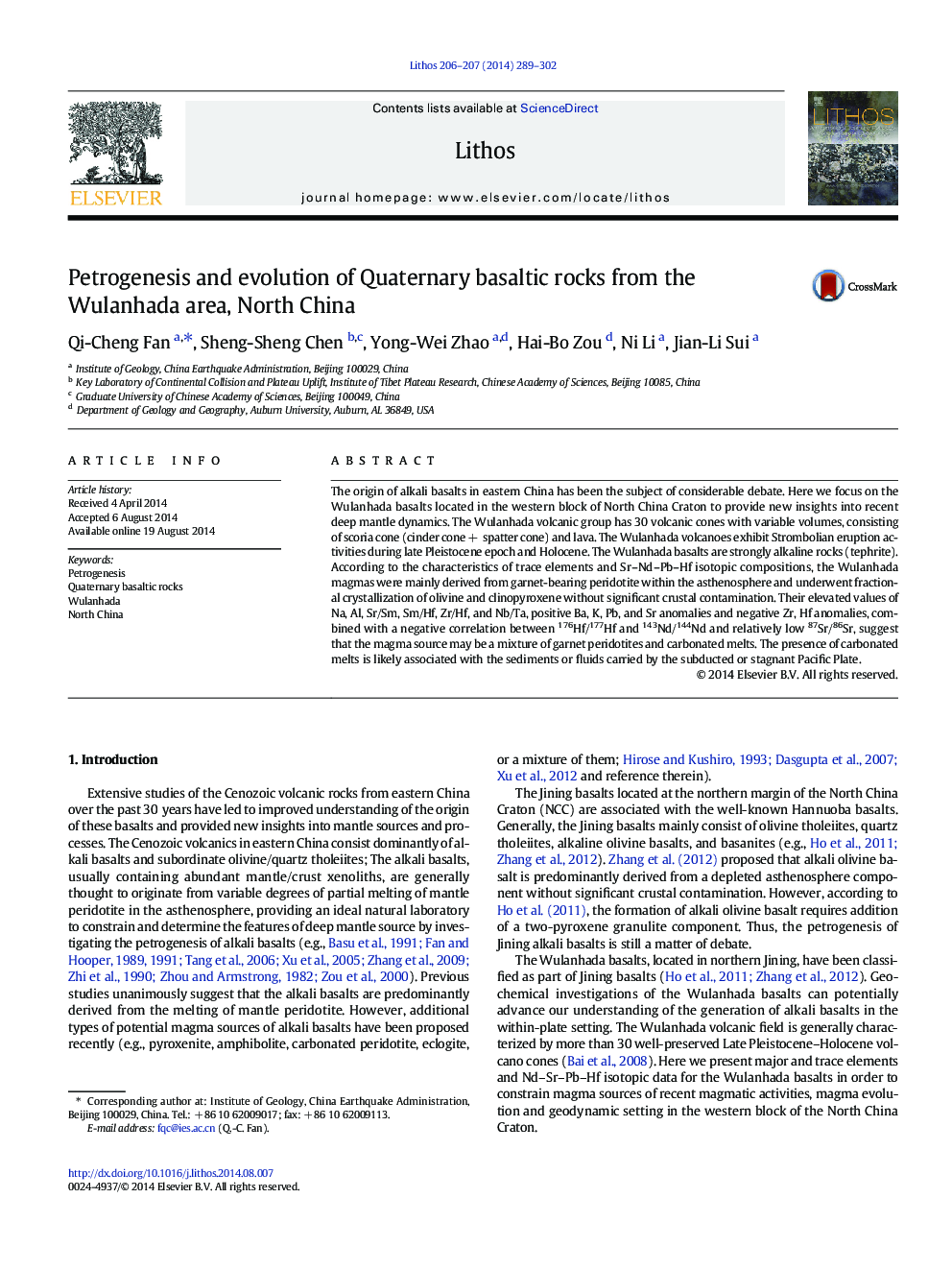| Article ID | Journal | Published Year | Pages | File Type |
|---|---|---|---|---|
| 4715953 | Lithos | 2014 | 14 Pages |
•The Wulanhada volcanic field represents recent volcanic activities in North China.•The Wulanhada basalts are strongly alkaline rocks (tephrites).•The Wulanhada basalts were derived from garnet-bearing peridotite with carbonated melt contributions.•Carbonated melts were likely associated with the sediments or fluids carried by the subducted or stagnant Pacific Plate.
The origin of alkali basalts in eastern China has been the subject of considerable debate. Here we focus on the Wulanhada basalts located in the western block of North China Craton to provide new insights into recent deep mantle dynamics. The Wulanhada volcanic group has 30 volcanic cones with variable volumes, consisting of scoria cone (cinder cone + spatter cone) and lava. The Wulanhada volcanoes exhibit Strombolian eruption activities during late Pleistocene epoch and Holocene. The Wulanhada basalts are strongly alkaline rocks (tephrite). According to the characteristics of trace elements and Sr–Nd–Pb–Hf isotopic compositions, the Wulanhada magmas were mainly derived from garnet-bearing peridotite within the asthenosphere and underwent fractional crystallization of olivine and clinopyroxene without significant crustal contamination. Their elevated values of Na, Al, Sr/Sm, Sm/Hf, Zr/Hf, and Nb/Ta, positive Ba, K, Pb, and Sr anomalies and negative Zr, Hf anomalies, combined with a negative correlation between 176Hf/177Hf and 143Nd/144Nd and relatively low 87Sr/86Sr, suggest that the magma source may be a mixture of garnet peridotites and carbonated melts. The presence of carbonated melts is likely associated with the sediments or fluids carried by the subducted or stagnant Pacific Plate.
